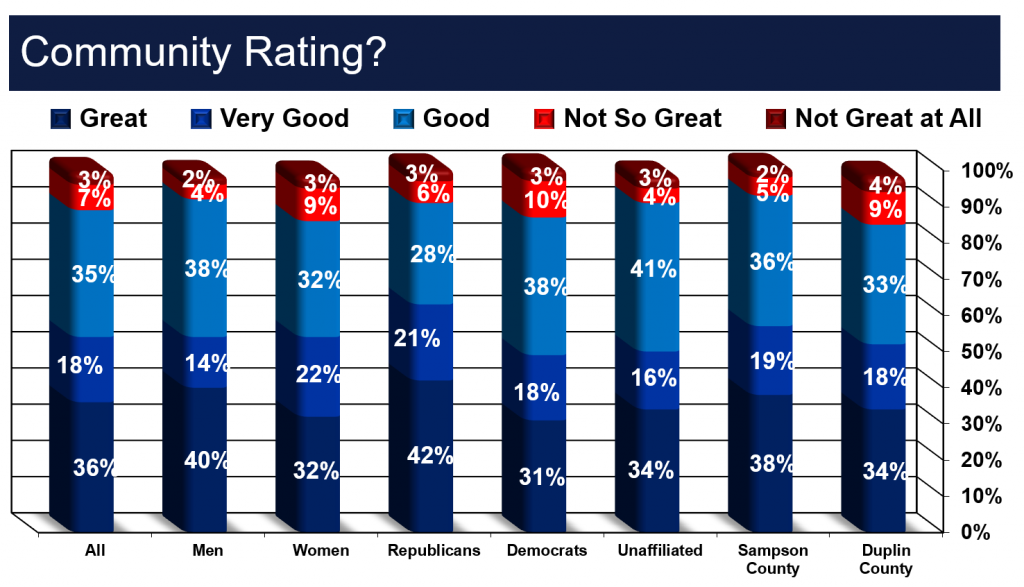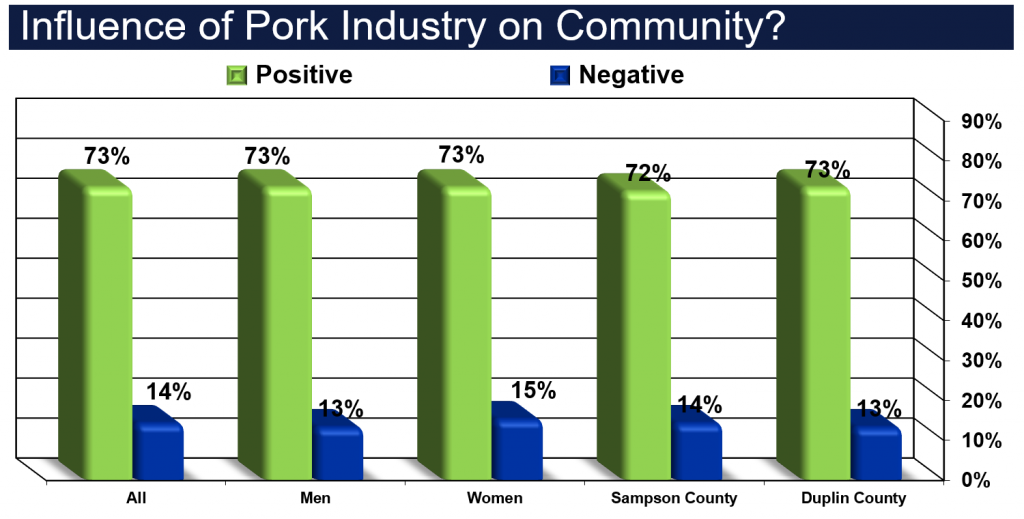Duplin and Sampson County voters are overwhelmingly positive about life in their local community, according to a survey of 500 registered voters conducted in September 2021. The poll, conducted by CHS & Associates, shows that nine in 10 voters view the community as a good, very good or great place to live.

“There’s a misperception out there that people don’t want to live in these communities because of negative impacts from agriculture. Our survey found just the opposite. People love living here, enjoy spending time outdoors, and overwhelmingly view agriculture as having a positive impact locally,” said Pat McFerron, president of CHS & Associates, a national research firm that has been providing trusted data and analysis since 1989. “We don’t often find Republicans and Democrats agreeing, but both groups believe the communities in Duplin and Sampson counties are good or even great places to live,” McFerron continued.
One issue addressed in the survey involved proposed biogas projects that will enable pig farmers to generate renewable natural gas on their farms. The survey found overwhelming support for RNG projects — by a 6-to-1 margin, voters support efforts by farmers to cover lagoons, capture gases and generate renewable energy.

Other notable survey findings include:
- 89 percent of voters rate Duplin and Sampson County as a good (35%), very good (18%) or great (36%) place to live. Only 10 percent view it as not so great (7%) or not great at all (3%). The best thing about living here: The people (36%) and the rural environment (24%).
- The most pressing issues facing the community are COVID-19 (15%), economy/jobs (12%) and crime (10%). Other top-rated concerns include a lack of amenities (6%), government leadership (5%) and infrastructure needs (5%).
- Two out of three residents participate in outdoor activities at least once a week, with about half of the residents enjoying outdoor activities several times a week (30%) or every day (19%).
- 77 percent of residents view the impact of the local agriculture industry as very (54%) or somewhat (23%) positive, compared with 16 percent who view the industry’s impact as somewhat (10%) or very (6%) negative.
- 73 percent of residents view the impact of the pork industry as positive, most often pointing to jobs and economic impact (63%). Only fourteen percent of respondents viewed the industry’s impact as negative. The positive view of the industry spans generations with the strongest numbers coming from those under those under 45 and over 75 years of age.
- More than eight in ten residents agree that hog farming is an important contributor to the local economy.
- 54 percent of voters indicated that they live within two miles of a hog farm. Of those, 84 percent said they had never experienced any issues related to the farm nearest their house. Only 11 percent of residents living within two miles of a farm have experienced issues with odor.
- Surprisingly, those who live within two miles of a farm expressed fewer concerns with farms than those who live further than two miles away.
- Residents do not consider odor from nearby farms to be a serious concern. 43 percent said they do not notice odor from farms, while an additional 20 percent categorized the odor as mild, and an additional 17 percent said that odor was rare. Fewer than 20 percent of residents considered odor to be strong (10%) or constant (19%).
- Only one percent of residents said farms have made their community a worse place to live.
The survey also revealed some misunderstandings about North Carolina’s pork industry. One example: 20 percent of voters believe that the number of hog farms in their community has increased over the past 10 years. In reality, a moratorium on the construction of new hog farms in North Carolina has been in place since 1997.
This poll was conducted September 20-27 by CHS & Associates on behalf of the NC Pork Council. The responses of 500 registered voters in Duplin and Sampson County were collected by live agents on mobile (38%) and landline (37%) telephones and through a text-to-web system (25%). The confidence interval associated with this sample is that 95% of the time the results are within 4.3% of the true values.
